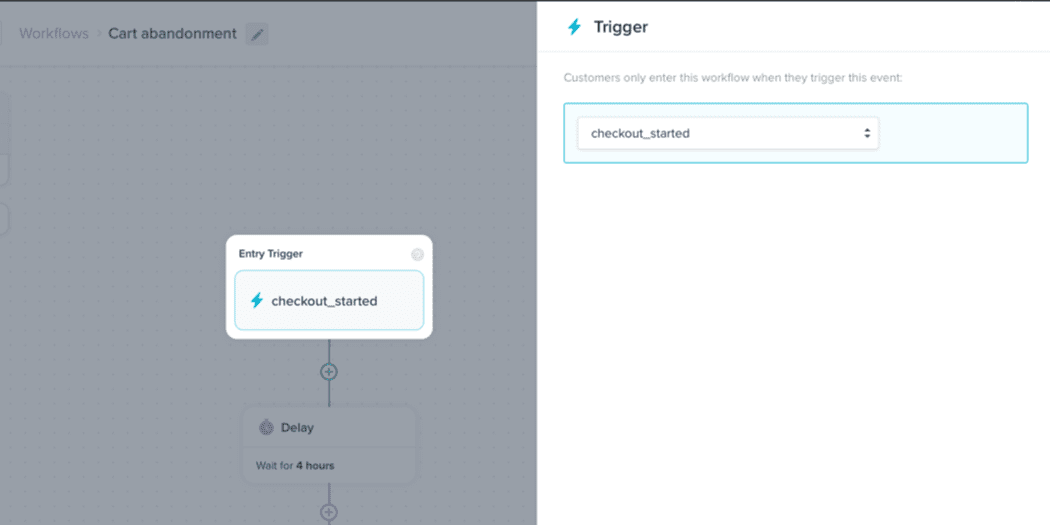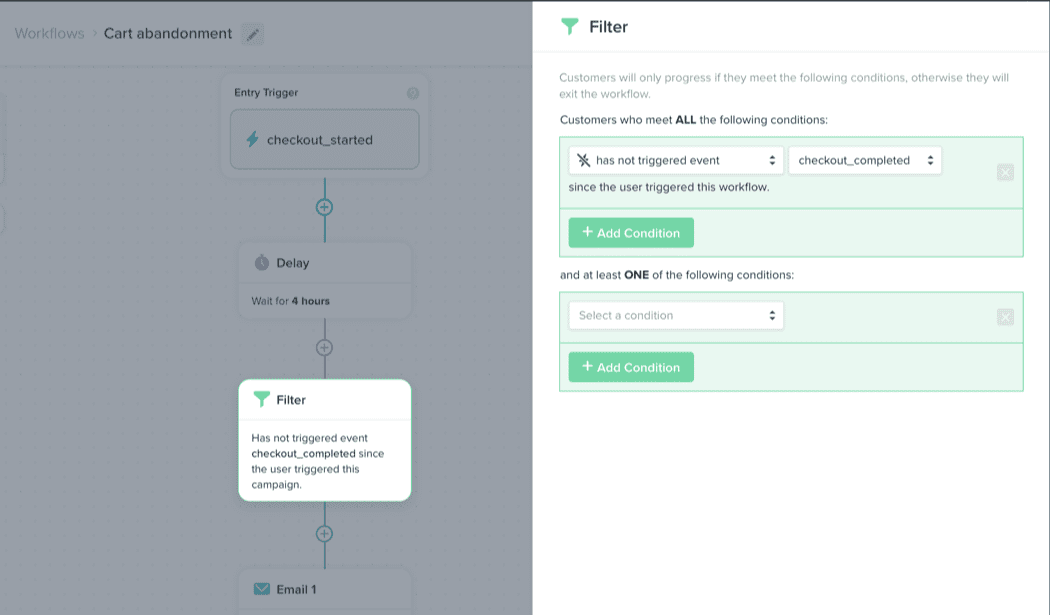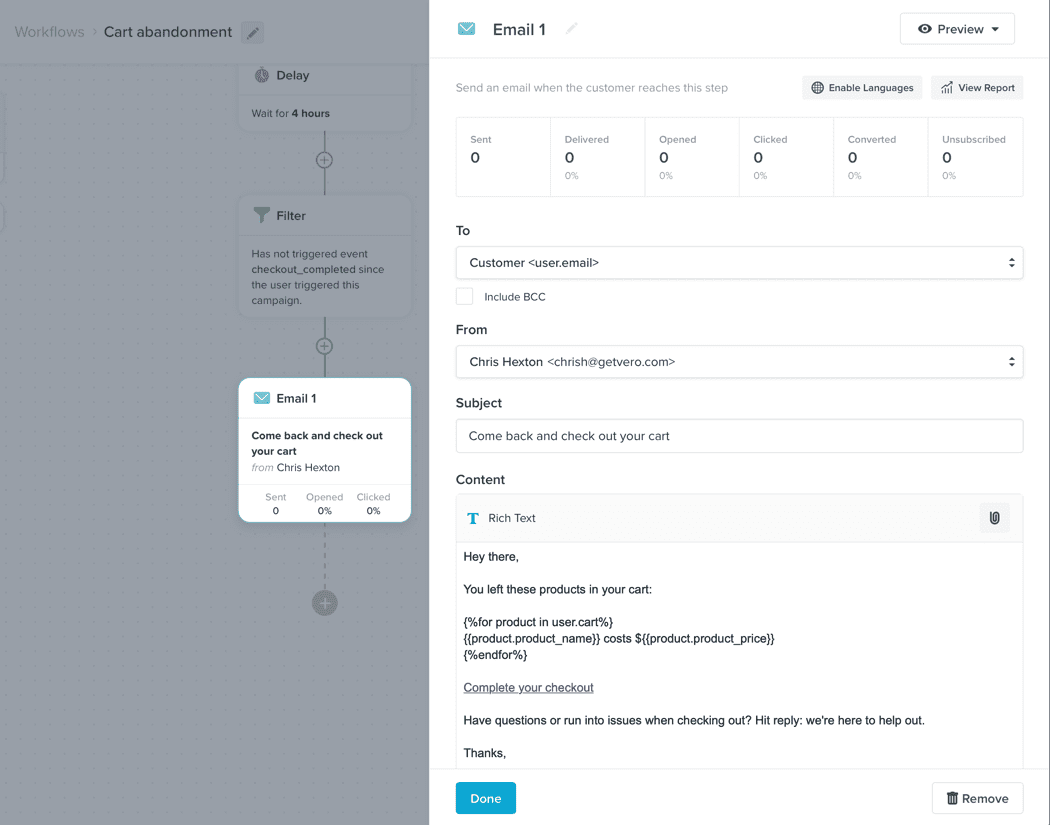- All Posts
- /
- How to get started with B2B marketing automation
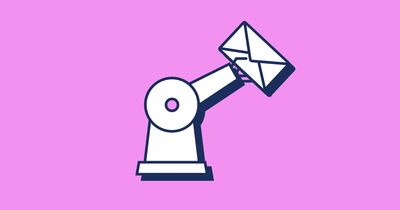
How to get started with B2B marketing automation
Messaging and Automation-
 Stephanie Knapp
Stephanie Knapp
-
Updated:Posted:
On this page
When you hear “B2B marketing automation,” do you think of impersonal messaging going out in a half-attempt to connect? Or do you think about the possibility to scale your efforts beyond your current team size?
We hope it’s the latter, but if not, we’ll hopefully introduce you to the positive aspects of automation. What is B2B marketing automation? In its purest form, it’s a method of delivering marketing messages without constant, manual input.
Think of it as marketing autopilot, allowing you to work on other areas of your business while your marketing carries on without direct supervision.
B2B marketing automation examples include the welcome email that goes out as soon as someone signs up for a free trial. Rather than having to wait until you get around to sending it, your automation software welcomes each new user as soon as they join.
For example, Trim uses an automated welcome email to get new users started. The company can create the email once, and it automatically directs new users about what next steps to take.
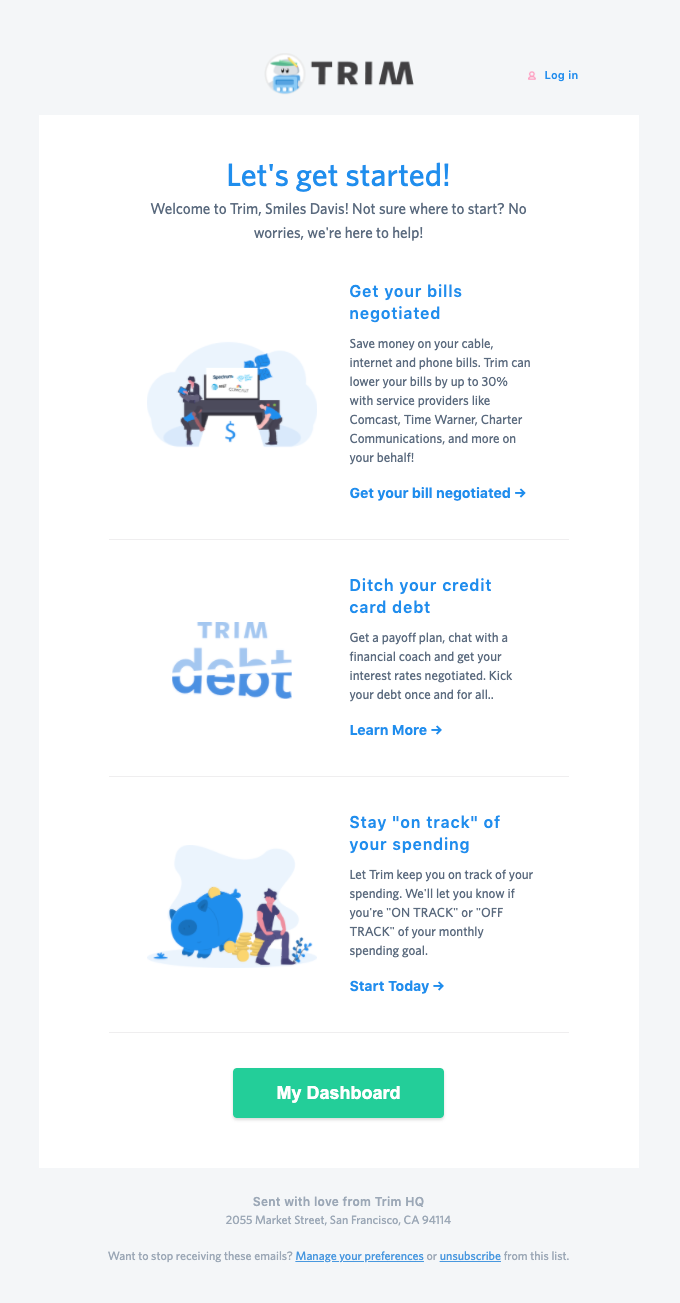
You can also use automation to pre-schedule marketing campaigns. For example, you can create a push notification for an upcoming sale two weeks ahead of schedule,freeing up time to work on other pre-launch tasks.
The case for marketing automation
There’s no doubt that we’ve all seen poorly-executed marketing automation.
Re-framing your approach will help you use marketing automation tools as they should be used, and in ways that don’t leave customers with a bad taste in their mouths.
The benefit of marketing automation is simple—it’s scalable and personalized messaging that leads to greater results with the team and resources you currently have. You essentially clone yourself by setting up marketing automation to deliver targeted and personalized messages that are relevant to a user’s journey.
Rather than having to manually send emails, your marketing automation software kicks in to deliver a better, more timely experience, without your constant input.
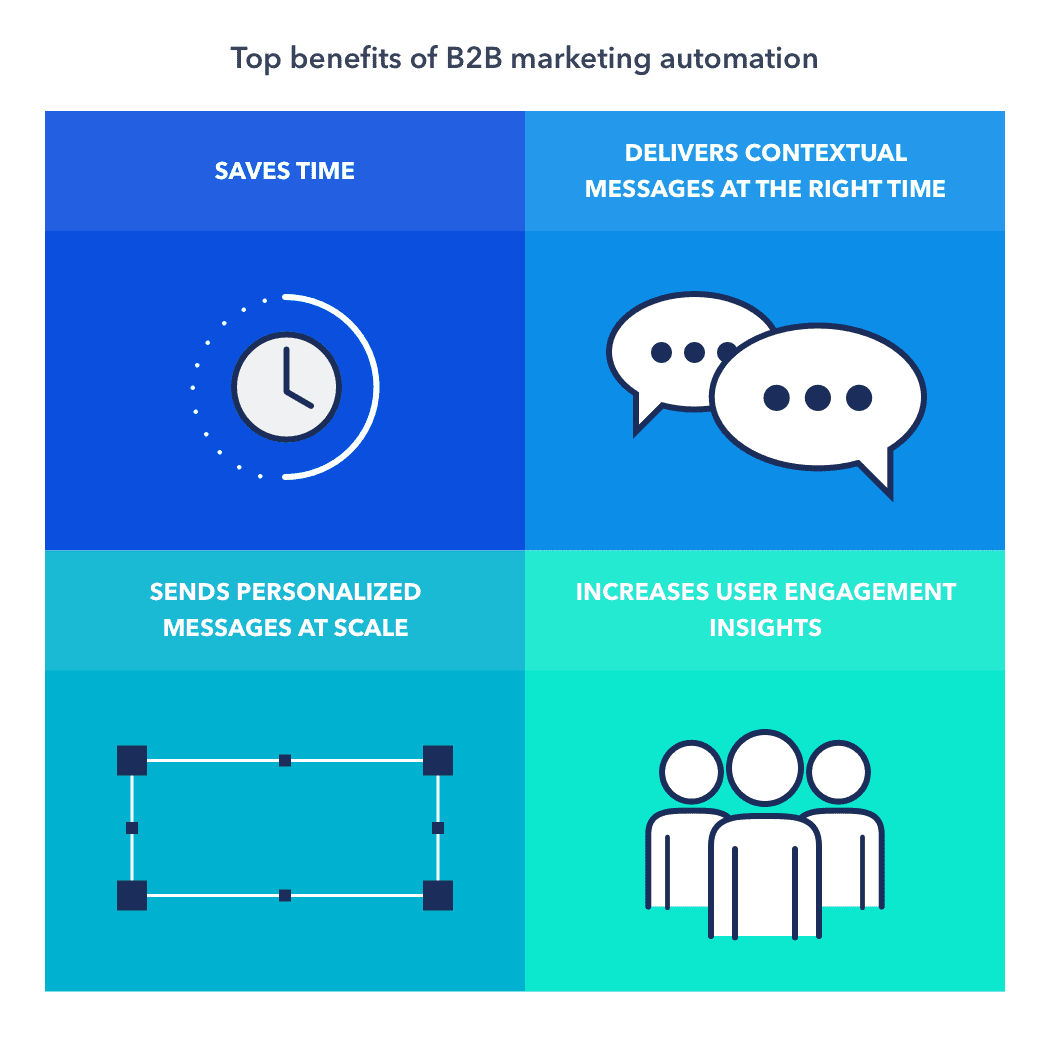
Employing B2B marketing automation also gives you access to more and better user data. Implementing tools that track customer engagements teaches you about user preferences and habits way more than any manual marketing could.
The benefits of good marketing automation:
- Increase your efficiency and productivity as a team, by doing more with less.
- Better serve a large customer base, by ensuring you never miss a beat.
- Invest in more nuanced and detailed workflows, that you’d never have time to do constantly and manually.
- Increased customer satisfaction and results.
The business results of these benefits can be really impactful. For example, CentricsIT was able to increase lead generation by 59% and achieve revenue growth of $1.5 million by implementing a triggered email campaign tied to automatic lead scoring and CRM data.
Similarly, McAfee was able to quadruple their conversion rate by segmenting leads and tracking their progress through lead nurturing campaigns.
Three components of marketing automation
Now that we’ve explored the benefits of B2B marketing automation, let’s get into the details of setting up your strategy and tools. Every automation strategy has three components: triggers, rules, and content.
1. Triggers
Triggers are the actions that tell the automation “it’s go time!” Examples of triggers include:
- Signing up for an email newsletter
- Starting a free trial
- Abandoning a cart
- Making a purchase
- Downloading an ebook
- Micro conversions such as reading a blog post, or watching a webinar
In the below Vero example, an abandoned cart email is sent out after a customer has started a check out, after a 4 hour delay.
When you’re deciding which triggers to create automations for first, think about the turning points in the user’s journey where more support would help, then base your automations off the types of messages you’d manually send your customers if you had the resources.
Whatever you feel would be ideal to send to your customers manually is a good guide for the sorts of messages you should automate.
Remember: Automation is just scaling up what you can’t do yourself! What are the actions that move them along the customer lifecycle? Start with the most significant milestones, like creating an account, and move on to micro conversions later. Automating and experimenting with welcome emails is a great place to get started.
For example, Asana uses their triggered welcome email to celebrate the new user’s choice to signup, as well as present options for what to do next.
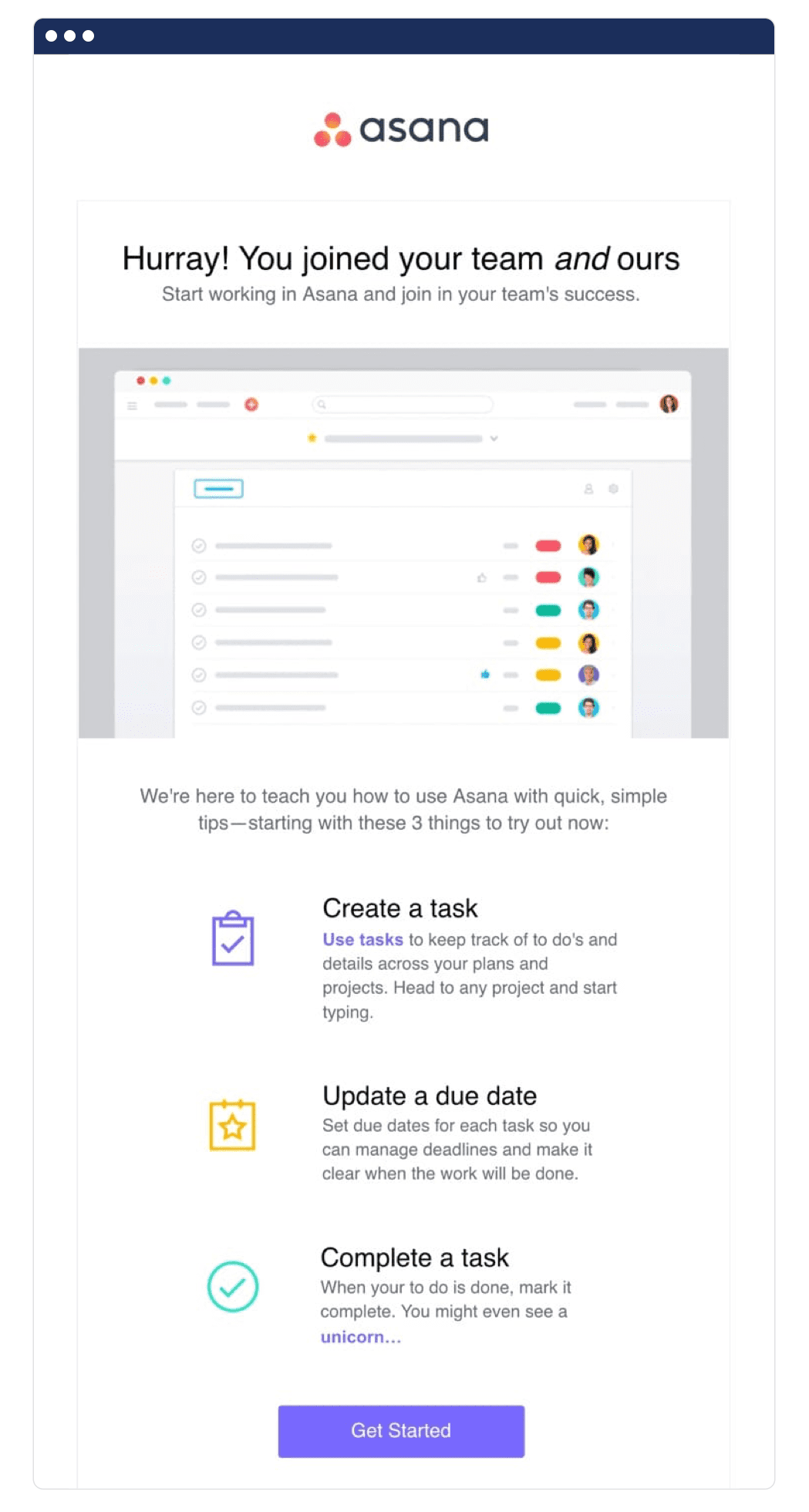
After you’ve created automations for lifecycle milestones, you can create retention triggers. Drift uses push notifications to alert users when there’s an update on their account, such as a customer viewing their personalized videos. By automating these triggers, you can keep customers up to date and consistently logging back in.
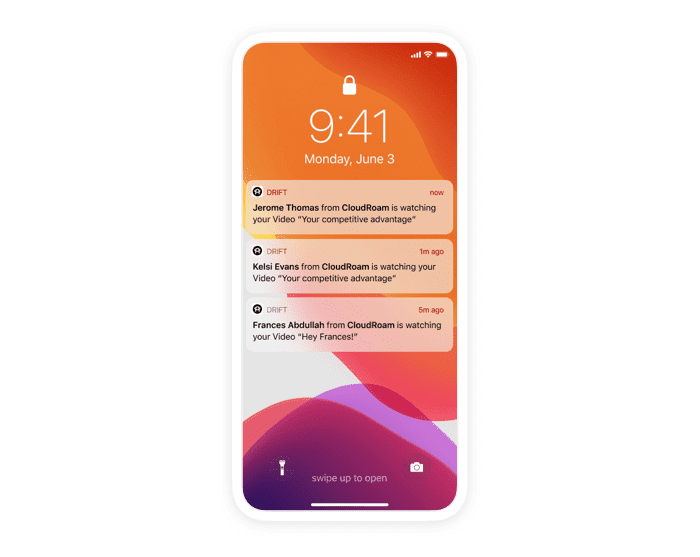
2. Rules
In B2B marketing automation, “rules” are the conditions that must be met for the message to go out. Rules come in all shapes and sizes, such as:
- Wait two days
- Only send if they aren’t also in another email sequence
- Send A email to A segment, and B email to B segment
See the below Vero screenshot for an example of adding rules before the abandoned cart email can be triggered.
Adding in rules is what enables you to tailor your automation so that it becomes more relevant to your users. Applying segmentation at this point by sending, or not sending certain messages to users based on their profile and past behavior enables you to send even more valuable content.
This is as you can iterate on your segmentation — something that would be almost impossible to maintain if you were doing everything manually. Rather than sending the same message to everyone who triggers an event, you can personalize the automation.
For example, LinkedIn triggers the email below when a user has completed a course. Rather than sending a generic blast email to their entire list about new content, they use momentum from someone completing a course to encourage them to “keep learning.”
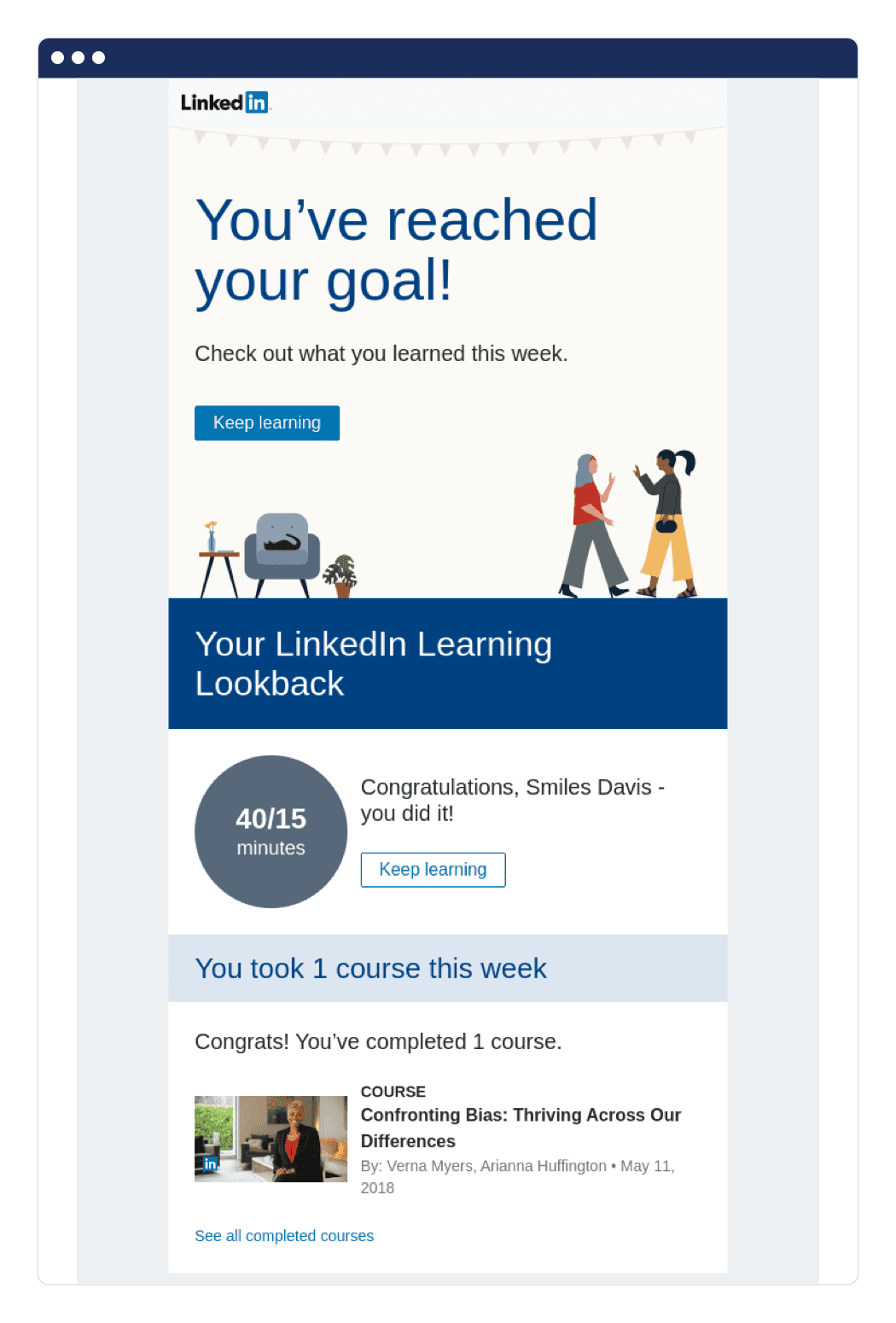
3. Content
The final component of your marketing automation is “content.” This refers to both the channel you’re using as well as the specific message you’ll send. Examples of automation content include:
- A welcome email to users who haven’t yet used the product, reiterating your product’s core value and how to get started using it.
- An abandoned cart push notification reminding users about a product they added to their cart that is about to go out of stock.
- An in-app push message announcing a new result has surfaced, matching a customers previous saved preferences
In the below screenshot, users can set up abandoned cart emails directly in Vero.
The content of your automation should put value first. You should always be striving to make your content useful and actionable for your users and customers. The content works in tandem with your triggers and “conditions,” and should consider the context of the action someone took, and what you’d like them to do next.
Take the B2B marketing automation example email below from Google Ads. The subject line “get help creating your first ad” and preview text “publish your ad in a few simple steps” make it clear what the desired action is. The content is helpful, since it gives an outline of what steps are required to get an ad up and running.
The copy also considers the context of someone signing up for a Google Ads account. The person wants to use ads to drive traffic to their product or service, so Google highlights the results that other companies have achieved.

When it comes to content in automated messages, you should definitely consider using dynamic content to make each message more relevant to the recipient. This is something that is very difficult to do for manual messages and one of the benefits of automation is that you can invest in personalization more heavily.
These three components of marketing automation come together in what is typically called a workflow. A workflow is a way to visualize your customer’s email and push notification experience as you create it by dragging and dropping elements.
Rather than trying to keep track of the automation flow in your head, you use your marketing automation software to create an organized chart.
B2B marketing automation vs. B2C marketing automation
Up until now, we’ve only covered B2B marketing automation. Is it different from B2C strategies?
These days—not really.
In the past, marketing automation tools may have only targeted “sales-focused” B2B companies or “product-focused” B2C businesses. The advice was kept separate, and many approached each business type as a unique entity.
However, the lines have now blurred. More and more businesses realize that selling B2B software involves creating a highly usable product, and the benchmark for highly usable products are B2C experiences. Not convinced? Just compare the customer journeys that blogs put forth for B2B and B2C businesses.
On the Shopify blog you’ll find a B2B customer journey map with five stages: awareness, consideration, acquisition, service, and loyalty.
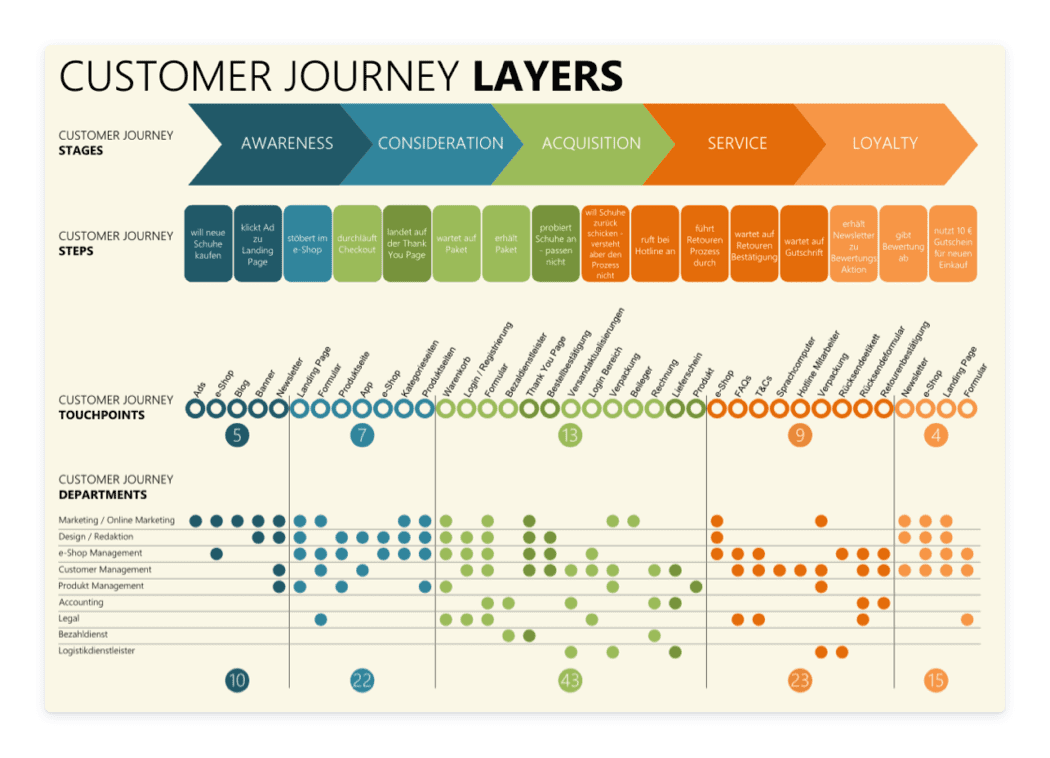
If you compare the image above to an ecommerce customer journey, some things may look familiar. There are also five stages: awareness, consideration, purchase, retention, and advocacy.
After all, the people using your software at work are the same people using highly polished software on their phones and computers at home! Sure, B2B and B2C companies are talking to different customers in varying capacities to sell separate items or services.
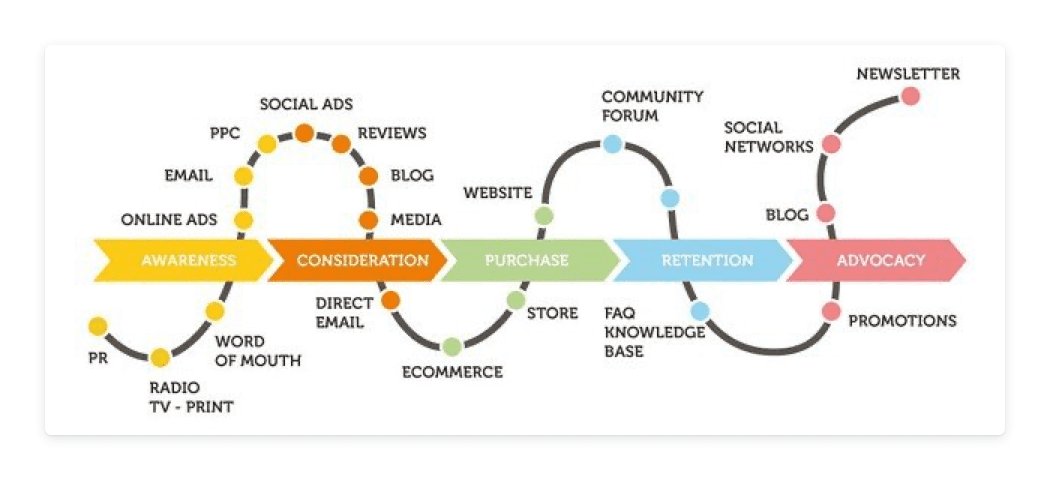
However, at the end of the day, every business benefits from considering the same customer journey. Whether you sell a product to consumers or software to businesses, your goal is to get people to use and love your product so much so that they become advocates.
It’s more important to think about the journey customers go on from first learning about you, to advocating for your product and brand, as opposed to which category you fall into.
B2B marketing automation best practices
We’ve covered the components and value of B2B marketing automation, now let’s review some best practices. Here are tips and strategies to keep in mind as you plan your first (or next) automation.
Know your buyer personas
Personalization, or at least impactful personalization, is difficult without understanding your buyer personas. What are your customers’ goals and challenges? What is motivating them to take action now? Any context you can glean about your users helps you create better automation.
For example, the buyer persona below covers details about the person, what they want to achieve, what’s getting in their way currently, and what aspects of the product are most enticing to them.

Track your results
After you’ve established the KPIs you’ll track, it’s time to follow them. Monitor your metrics regularly to see how campaigns perform over time. Keeping track of metrics also gives you a baseline, so that you have a “normal” to compare A/B tests to.
Focus on personalization
Just because marketing automation messages get sent out automatically on a massive scale, doesn’t mean it’s okay for them to be generic. Personalization and segmentation go a long way in delivering messages that feel much more like you manually sent it, even when you didn’t.
Since you can use automation to test messaging and segmentation in controlled batches, you have an opportunity (and a responsibility) to really nail segmentation.
Decide on your KPIs upfront
It’s impossible to track the impact of your marketing automation if you don’t establish key performance metrics and benchmarks upfront. Understand what the goal of each automation is, such as conversion, as well as how you’ll measure it. This ensures you know why you’re sending every message, helping to guarantee you’re sending valuable messages.
Maintain your writing style
Another way to make automation feel more personable is to treat writing them as you would other emails. Some messages benefit from a more relaxed tone, while others need to be formal. Above all, try to maintain your brand’s writing style across all platforms, but avoid stuffiness where possible.
Let’s quickly explore a few writing styles. First, Uplers’ writing is confident and concise. They have the stats to back up their expertise, and they’re straight to the point.

While Uplers had a direct writing style, Tracksmith leans into storytelling. As opposed to Uplers’ data-driven special proof, Tracksmith highlights customers and their journeys.
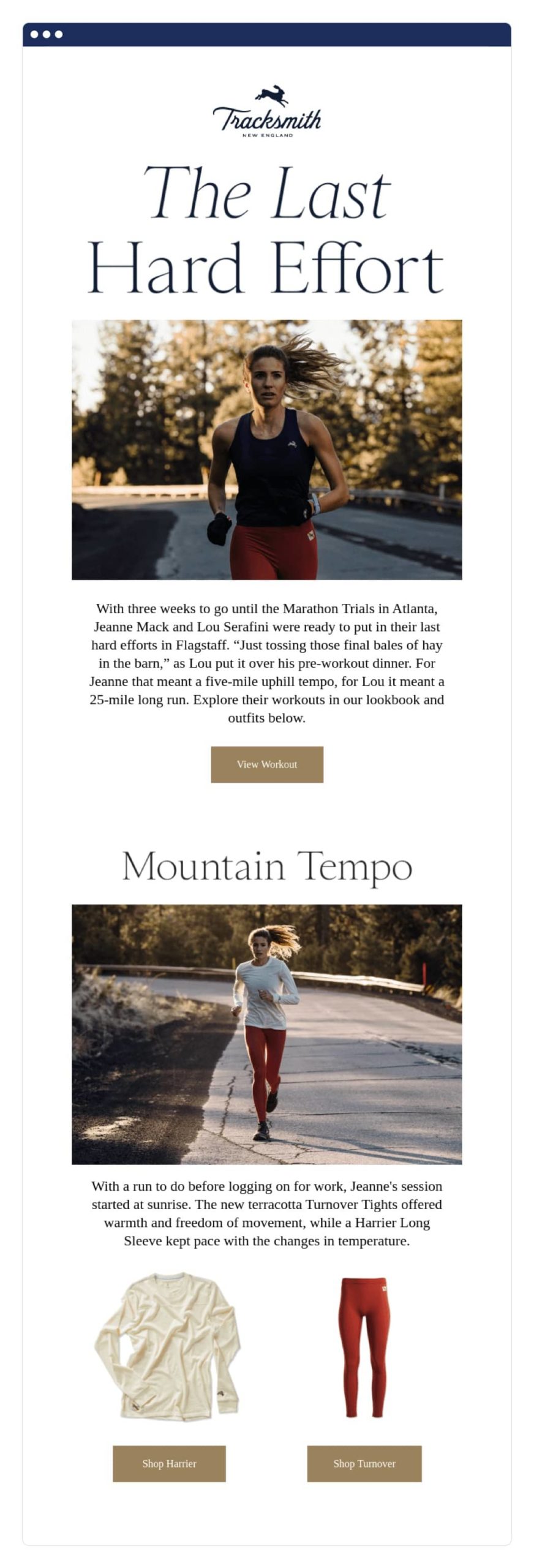
If you do decide to use a conversational writing style, make sure it isn’t deceptive. Your automated messages should never give the impression that they’re actually being written by hand in real time when they aren’t.
Don’t bombard your customers, just because you can
Once you realize how easy it is to send automated emails, you may be tempted to send more and more. Resist the urge to send too many emails, though. Bombarding your users’ inboxes with too many messages will annoy them.
Map your buyer’s journey and workflow
You need to not only understand your buyer personas, but the buyers’ journey for each of them. As you add marketing automations, you want to ensure you’re mapping these to the buyer’s journey for each of your customer personas.
To ensure you keep track of what you’re building and sending, it is helpful to map everything out from a high-level. Laying out your workflow automations helps you identify any gaps or overlaps in strategy. Using a flowcharting tool like Miro can help you see how different campaigns interact.
The example from Miro below shows customer journey maps that plot out customer personas, journey maps, action plans, and more.

Vero’s experience using automation
Not only does Vero offer tools that help companies succeed at automation—we use it in our business, too! Marketing automation has helped our small team serve thousands of customers.
While one-on-one marketing worked out for us in the early days of our business, we have only found it possible to deliver an exceptional customer experience using automation as our user base has grown.
Automation helps turn the input of a handful of individuals into enough output to help every user and prospect.
Like many companies that sell globally, marketing automation enables us to connect with our global customer base 24/7 on their timezone and in response to their product usage. If we were trying to manually operate all marketing and support channels on all timezones, we simply couldn’t afford to send all of the messages and provide the customer experience we do.
Sophisticated workflows aren’t built in a day, and starting small with a welcome email is a perfect way to test out automation.
Below is an example of a basic abandoned cart workflow in Vero, the beginning of all the intricate workflows that can be created in our tool.
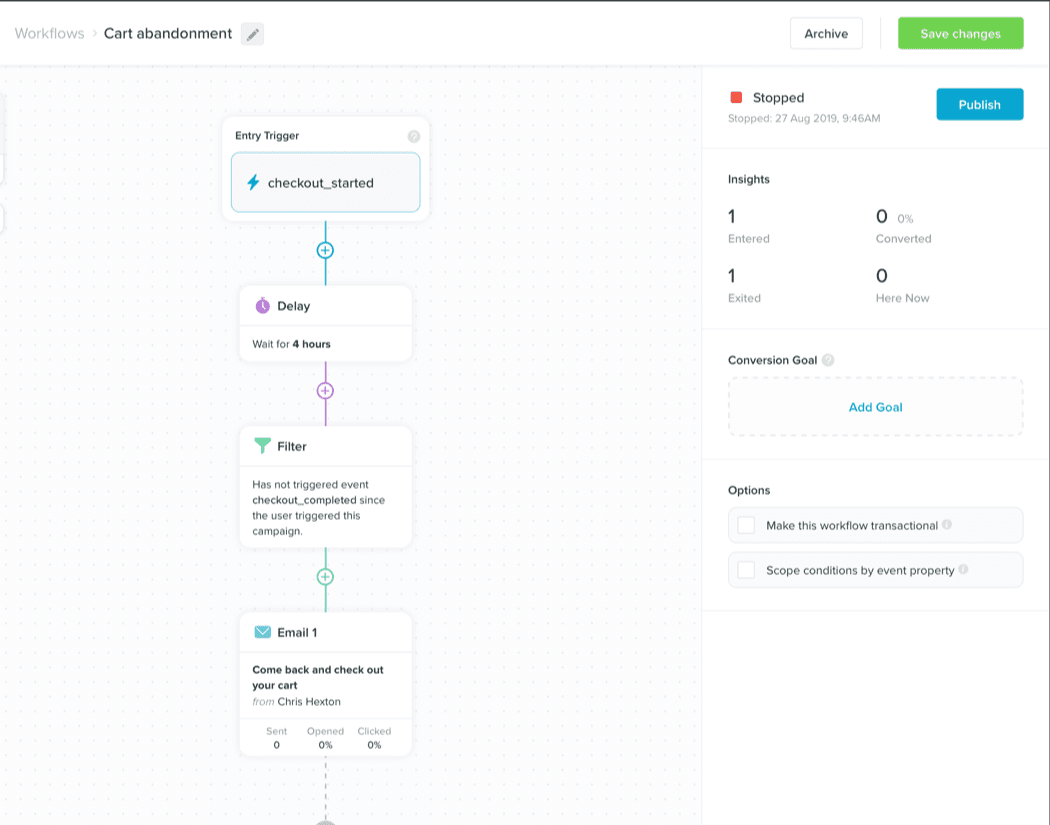
To get creative with your automation segmentation and content, you need to have the right tools in place. If you’re looking for a marketing automation tool to connect to your business, consider Vero. Our email and push notification tools help you engage customers and create custom automations.
Sign up for a free trial today to get started!
